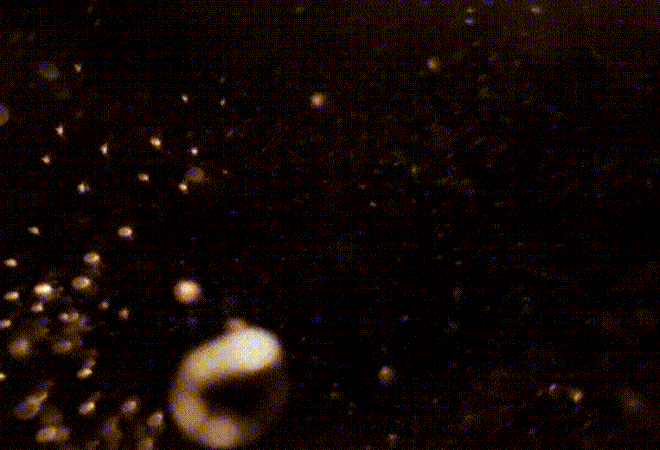Whether you’re a fan or not, there’s something magical about a freshly—and properly—poured pint of Guinness. The way that creamy head forms at the top, and the tiny bubbles cascade down into the deep dark abyss. It’s a work of art. But that art—those cascading bubbles and creamy velvet-smooth head—isn’t magic. It’s science. More specifically, it’s nitrogen.
When your friendly local bartender pours you a pint of beer, it’s usually from a keg that uses straight carbon dioxide to carbonate the beer. That distinctively bitter bubble in your suds is caused by the CO2 in it. Guinness, however (and other nitro stouts and porters), is pulled with a mix of both carbon dioxide and nitrogen, which is really the secret to it all. Everything we know and love about Guinness—from the beautiful bubbles, to the creamy smooth head, and even its sweeter and more mellow finish—all starts and ends with nitrogen. It’s for this reason that pints of Guinness are carefully pulled in a multi-step process that involves time, patience, and skill by a bartender who knows what he’s doing.
But, as you know, Guinness doesn’t just come on draft. You can enjoy that same magic from the comfort of your home—no nitro tap necessary. And if you’ve already had a can of Guinness at home, you felt the secret knocking around in the bottom of the can.
It’s called a “Widget.” But what is a widget and how does it work?

The Widget’s story dates back to 1964, when Guinness was trying to figure out how to bring their tasty stout out of the pub and into Ireland’s homes. By nature, Guinness—like most other stouts and porters—is a low carbonated beer, which means that without the added nitrogen, it would stay flat, and wouldn’t get the creamy head people who drink the stuff love so much. Guinness knew they’d never be able to market the relatively flat beer as real Guinness. And let’s face it, without the nitrogen, that’s pretty much all it was. The team got to work and in 1969 patented what would become the Widget. But for one reason or another, it wasn’t until 1989 that they actually put it to use.
The first iteration of the widget came in the form of a simple flat circle specifically engineered to sink to the bottom of the can. While it worked great when the beer was good and cold, it proved disastrous when warm. The beer would just fizz and explode everywhere.
Guinness released the second iteration in 1997, the floating ping pong ball-like sphere we know and love today.
Its operation is a simple piece of genius, too. Basically, when every individual can of Guinness draught is sealed, a little bit of pressurized nitrogen gets added to the can. That nitrogen finds its way into the widget.

When the can is cracked open, it’s depressurized, and the nitrogen in the widget is forced out of the widget and mixes with the beer. This sudden burst of nitrogen bubbles rises to the top of the beer, which is poured into a glass.
One of the obvious questions here is: “Why not just load the cans with nitrogen and scrap the widget?” The issue is that without the widget, the nitrogen would just be hanging out in the beer. While it wouldn’t affect the taste, it would require a hell of a lot more pressure to create the kind of burst that would allow a head to foam up. Even with the appropriate levels to make that happen cold, you’d still have over-pressurized cans when warm, which means exploding beers all over the place.
Another is, “Why not just use carbon dioxide like other beers?” While we’ll concede that CO2 is usually the go-to for most breweries, it doesn’t sit with Guinness for a couple reasons. The first being that Guinness is a sweeter, full-bodied beer. CO2 yields a crisper, more bitter taste profile, which means it’d completely change the taste of the beer. The second—and this one is the most important—is that CO2 has a thicker bubble. Nitrogen produces smaller, more manageable bubbles, keeping Guinness smooth. If you cut out the nitrogen from the equation, you’d be left with a real dark beer with a thin, boring head with no real volume or density. It’d be a whole different beer.




